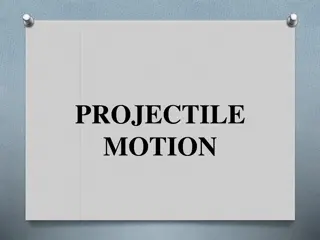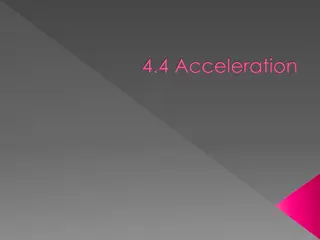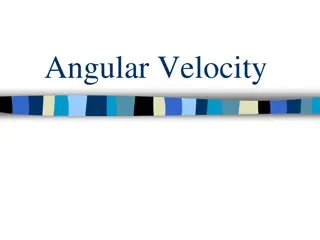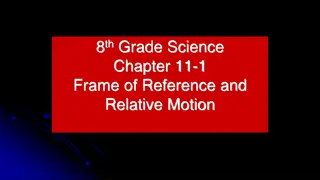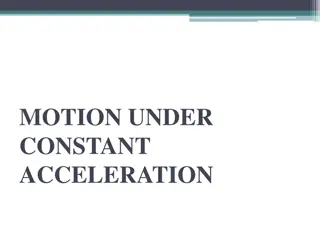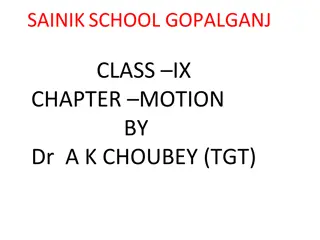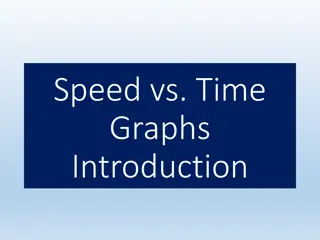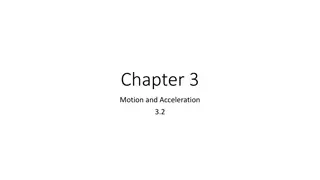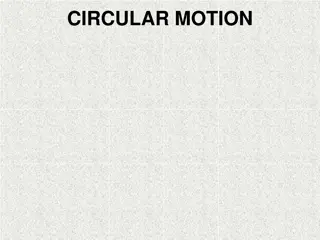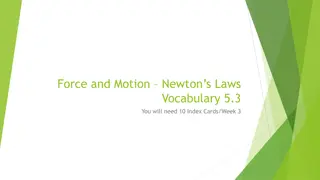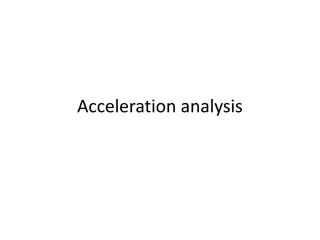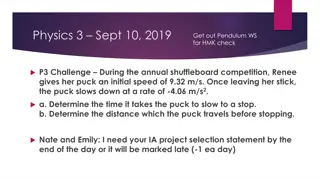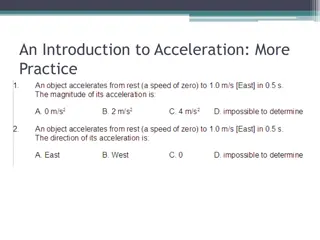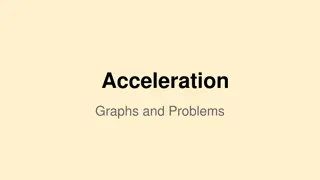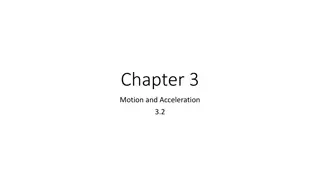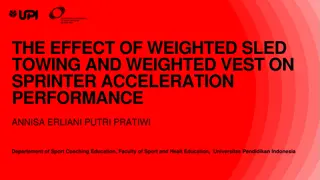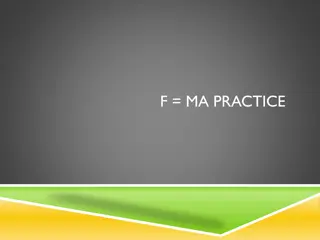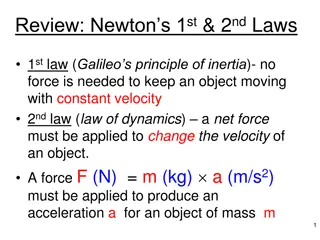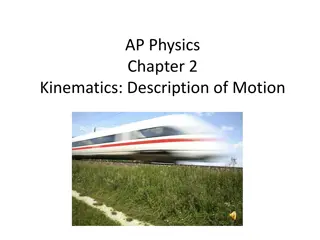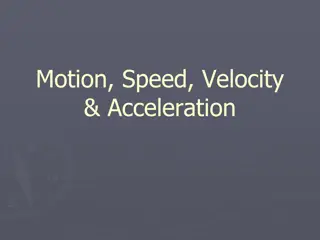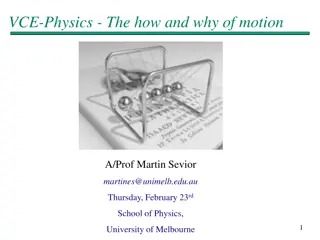
Understanding Acceleration in Motion Studies
Learn about acceleration in motion studies - the rate at which velocity changes with time, the impact of speed and direction changes, calculations of average acceleration, and the relationship between velocity and acceleration. Explore constant acceleration equations and analyze position-time graphs for a comprehensive understanding of motion dynamics.
Download Presentation

Please find below an Image/Link to download the presentation.
The content on the website is provided AS IS for your information and personal use only. It may not be sold, licensed, or shared on other websites without obtaining consent from the author. If you encounter any issues during the download, it is possible that the publisher has removed the file from their server.
You are allowed to download the files provided on this website for personal or commercial use, subject to the condition that they are used lawfully. All files are the property of their respective owners.
The content on the website is provided AS IS for your information and personal use only. It may not be sold, licensed, or shared on other websites without obtaining consent from the author.
E N D
Presentation Transcript
Motion Quick Review 2 ACCELERATION
Acceleration Acceleration is the rate at which velocity changes with time. The velocity changes when the speed of an object changes. when the direction of motion changes. Therefore, acceleration occurs when there is a change in speed, a change in direction, or a change in both speed and direction.
Acceleration cont., Example: An automobile accelerates by increasing its speed 2 m/s every second. After 1 second his speed is 2 m/s, after 2 seconds his speed is 4 m/s, and so on. ? = 0? ? = 0 ? = 1? ? = 2? ? = 4 ? = 3? ? = 6 ? = 2 ? ? ? ? ? ? ? ?
Acceleration cont., Average acceleration of an object is the change in its velocity divided by the change in time. Stated mathematically, the definition of average acceleration aav is
Acceleration cont., The speed of an object increases when its velocity and acceleration are in the same direction, but decreases when its velocity and acceleration are in opposite directions.
Velocity vs Time The graph of the velocity equation vf = vi + at is a straight line. The line crosses the velocity axis at a value equal to the initial velocity and has a slope equal to the acceleration. When the acceleration is constant, the average velocity is equal to the sum of the initial and final velocities divided by 2.
Motion with Constant Acceleration There are five constant acceleration equations of motion Variables Related Equation ??= ??+ ?? ????=1 velocity, time, acceleration initial, final, and average velocity ??+ ?? 2 ??= ??+1 position, time, velocity ??+ ??? 2 ??= ??+ ??? +1 position, time, acceleration 2??2 2+ 2? ? 2= ?? velocity, position, acceleration ??
Positon vs Time Graph for Constant Acceleration The shape of a position-time graph contains information about motion whether the motion has constant velocity or constant acceleration. While a table is useful in conveying information regarding motion, a graph offers a better way to visualize the motion. Time (s) Position (m) 1.00 3.70 2.00 14.8 3.00 33.3
Positon vs Time Graph for Constant Acceleration cont., Constant acceleration produces a parabolic position-time graph. The sign of the acceleration determines whether the parabola has an upward or downward curvature.
Positon vs Time Graph for Constant Acceleration cont., The magnitude of the acceleration is related to how sharply a position- time graph curves. Considerable information can be obtained from a position-time graph.
Positon vs Time Graph for Constant Acceleration cont., Each term in the equation has graphical meaning. The vertical intercept is equal to the initial position xi. The initial slope is equal to the initial velocity. The sharpness of the curvature indicates the magnitude of the acceleration.
Positon vs Time Graph for Constant Acceleration cont., A single parabola in a position-time graph can show both deceleration and acceleration. A constant curvature indicates a constant acceleration. A ball thrown upward is an example of motion with constant acceleration.
Exit Ticket An object moves as described by the following velocity vs time graph 1. Describe the motion. 2. What is the distance travelled? 3. What is the average speed? 4. What are the accelerations experienced by the object? (Hint: there are 3 different accelerations)

